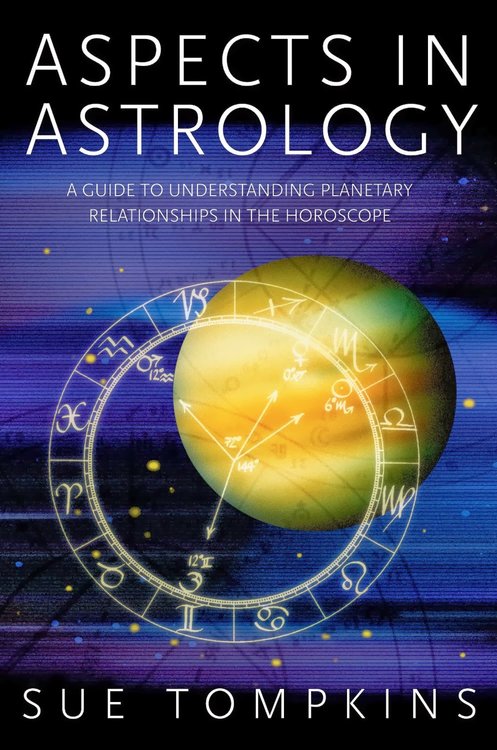 “Aspects in Astrology,” authored by Sue Tompkins and initially published in 1989, stands as an enduring contribution to the field of astrology. With its comprehensive exploration of planetary aspects and their impact on relationships, this book has solidified its reputation as a valuable resource for both beginners and seasoned astrologers alike. Tompkins takes a psychological approach, providing readers with a deep understanding of each of the ten planets before delving into their interconnected relationships. This methodical approach lays a strong foundation for readers to fully comprehend the individual qualities and symbolism associated with each planet before delving into the relationships that exist between them.
“Aspects in Astrology,” authored by Sue Tompkins and initially published in 1989, stands as an enduring contribution to the field of astrology. With its comprehensive exploration of planetary aspects and their impact on relationships, this book has solidified its reputation as a valuable resource for both beginners and seasoned astrologers alike. Tompkins takes a psychological approach, providing readers with a deep understanding of each of the ten planets before delving into their interconnected relationships. This methodical approach lays a strong foundation for readers to fully comprehend the individual qualities and symbolism associated with each planet before delving into the relationships that exist between them.
The Sun embodies personal identity and creative self-expression, while the Moon reflects emotions, intuition, and the subconscious. Mercury, the messenger planet, governs communication and intellect, while Venus radiates beauty, love, and harmony. Mars embodies passion, action, and drive, while expansive Jupiter signifies growth, abundance, and wisdom. Saturn, the taskmaster, symbolizes discipline, responsibility, and life lessons. Uranus, Neptune, and Pluto introduce transformative forces, innovation, spirituality, and profound change.
Central to “Aspects in Astrology” is the exploration of how planetary angles, often referred to as aspects, influence an individual’s life, personality, and relationships. Tompkins artfully guides readers through the various types of aspects, such as conjunctions, sextiles, squares, trines, and oppositions. These aspects create a celestial dialogue that influences an individual’s strengths, challenges, and potential areas of growth. One of the book’s notable strengths is its consideration of the mutable, cardinal, and fixed modes within the astrological chart. These modes provide further layers of insight into an individual’s unique temperament and behavior, deepening the astrological analysis of the aspects and enhancing the accuracy of predictions.
Whether you’re a dedicated astrologer or simply intrigued by the planetary forces at play, this book stands as a timeless and essential addition to your collection.
A quote from the book:
Sun-Venus people all want love and to be loved; they tend to identify, rightly or wrongly, with the notion of being a loving and affectionate kind of person. And they want to be seen in that light, recognized as a person who is amiable, popular and tender hearted. Usually, Sun-Venus, ever wanting to please and be popular is popular, especially with women. To be a loving person, and to be recognized as such, may be the most important thing in the world to the Sun-Venus type, although obviously the rest of the chart needs to be carefully examined. The need for personal popularity can be so strong that the individual finds it very difficult to confront unpleasant issues, or show themselves in an unpleasant light. They may find it difficult to push themselves forward, for doing so might ‘make waves’ and Sun-Venus would rather not risk that. Aspects in Astrology: A Guide to Understanding Planetary Relationships in the Horoscope
